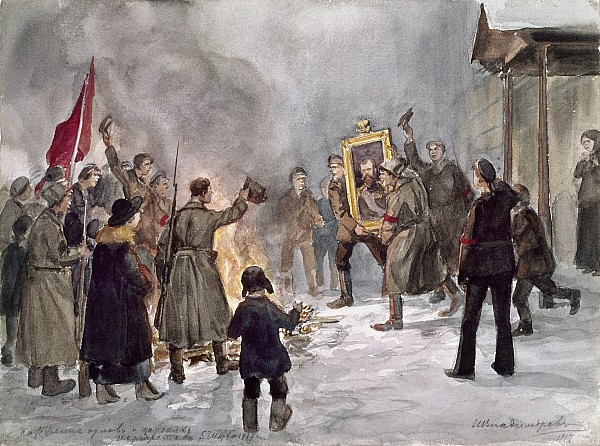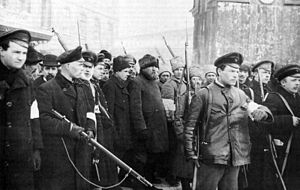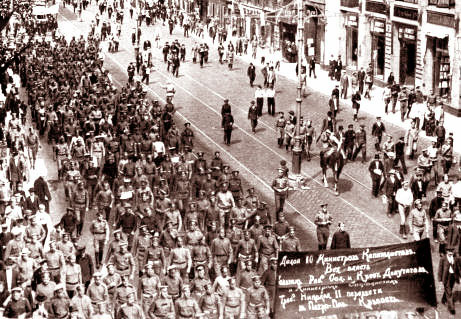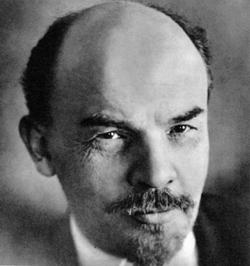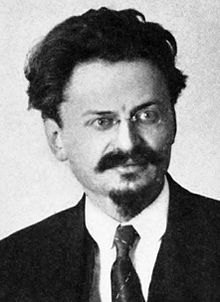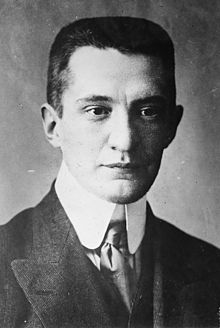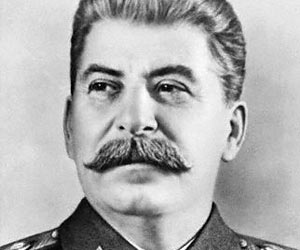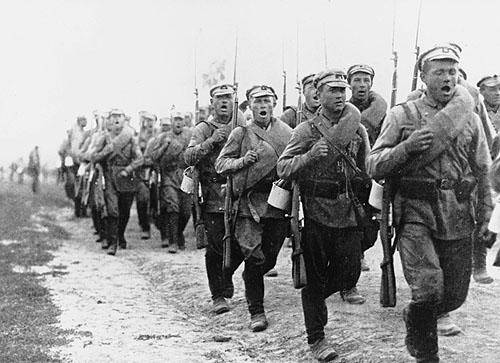Albany Senior High School Russian Revolution by Samuel Barnaby
Contents
The Russian Revolution
In 1917 there were two revolutions, one on the 23rd of February which overthrew Tsar Nicholas II and established a Provisional Government and one the 7th and 8th of October wich brought the Bolsheviks under Vladimir Lenin (1870-1918) into power. These caused a Civil War in the Russian Empire which was between Soviet Russia who was led by Vladimir Lenin, Leon Trotsky and Mikhail Tukhachevsky and the White Movement who was led by Alexander Kolchak, Lavr Kornillov, Anton Denikin, Pyotr Wrangel and Nikolai Yudenich, it was from November 1917 to october 1922 and resulted in the Russian Empire becoming the Soviet Union (lasted from 1922 to 1991).
http://www.youtube.com/embed/VZPDvYSwyqg
February Revolution 1917
This revolution started on the 23rd of february wich was International Women's Day, the women working at the textile factories started striking, marching and calling for bread, later on they were joined by 50,000 people, despite this and the crowd being more militant than usual the Cossacks(type of cavalry in the Russian Army) were reluctant to charge at them. Revolutionaries such as Alexander Shliapnikov who was a Bolshevik were not involved in starting this march, they were against the idea of giving people guns because they thought this would lead them to clash with the Army. Two days later on February 25 the movement had grown to 200,000 workers Because of this Tsar Nicholas II sent an order to put a end to what he called 'disturbances' to General Khabalov who then issued orders that all demonstrations should be stopped and for troops to fire on the crowds. This did happen on February 26 also more than 100 Bolsheviks, Mensheviks and SRs(Socialist Revolutionaries) were arrested. The order for troops to fire on the crowds had backfired because people still took to the streets.
On the 27th of February the 10,200 soldiers of the Volynskii guards regiment revolted, they shot their officers and called for other soldiers to follow, the day after there numbers had grown to 127,000. As a result the arsenals were opened to eveyone, prisoners were released from jail, police were lynched, other officers were shot and major looting began.General Khabalov sent a telegram to Tsar Nicholas II saying that he failed to restore order, when the Tsar got the telegram he immediately dismissed General Khabalov and prepared to send another army to suppress the revolt. The result of all of this was the emergence of two ruling bodies The Provisional Committee of the Duma and The Petrograd Soviet.
http://www.youtube.com/embed/7bFDibsXEOs
October Revolution 1917
In October Vladamir Lenin returned to Russia in disguise, he was the driving force in planning to take over from the Tsar. Lenin realised the peasants importance especially in the army, so he changed his programme from nationalising all of the land to distributing it to the peasants according to their need. Lots of rural Soviets changed to the Bolshevik programme and some even elected Bolshevik majorities. This takeover was mostly run by Leon Trotsky( born Lev Davidovitch Bronshtein), he used the Bolsheviks and the left-wing Socialist Revolutionaries to convince the Soviets to let them set up the Military Revolutionary Committee (MRC) as a guard against Kornilov reactions.The MRC then sent commissars (officials) to all of the military units that were in reach, these commissars became important links between the Bolsheviks and the Soviets. In the name of the Soviets the Bolsheviks gained a network to influence and feed infomation to the Russian forces. Then they waited for Alexander Kerensky who was the current Minister-Chairman of the Russian Provisional Government to give them an excuse to act to defend the revolution. Trotsky spread rumors that the government were going to send the garrison from petrogad (Saint Petersburg) to the front thus abandoning the city to the Germans. People thought that the Bolsheviks would take action, the different socialist parties thought that the attempt would get less support than the previous time. On the 23rd of October Alexander Kerensky gave them an excuse, he closed down two Bolshevik newspapers. Two days later on the 25th of October a few regiments and about 8000 sailors from Kronstadt on the orders of Trotsky quietly took over all services and stations in Petrograd. The local commander Colonel Polkolnikov told Kerensky that no soldiers were 'available'. Only 2000 Military cadetsand a few hundred women soldiers rallied to the governments side. No shots were fired and at 10:00 am Lenin declared the Provisional Government overthrown and power to be in the hands of the MRC (Military Revolutionary Committee) for the Petrograd Soviet.
http://www.youtube.com/embed/UvoEFKZqT44
People involved in the February and October Revolutions
Vladimir Lenin (born Vladimir Ilich Ulyanov) 1870-1924
Vladimir Lenin was born on the 22nd of April 1870 in Simbirsk on the Volga river. He excelled at school and then went on to study law at Kazan Federal University (1887-1888) and Saint Petersburg State University (1890-1891), these places were where he was exsposed to radical thinking, his views were also influenced by the execution of his older brother who had been a member of a revolutionary group. He was expelled from university because of his radical policies, but he did complete his law degree as an external student in 1891. Moving to Saint Petersburg Lenin became a professional revolutionary. After his exile in Siberia in 1901 he adopted the pseudonym Lenin, he was a prominent figure in the Internantional Revolutionary Movement and he also became the leader of the Bolshevik faction in the Russian Social Democratic Worker's party. In 1917 he was assisted by the Germans in his return to Russia (they did this because they thought he would undermine the Russian war effort), when he finaly got back he started working against the Provisional Government that had helped overthrow the Tsar. He eventually led what became known as the October Revolution.
http://www.youtube.com/embed/gmfr8IRZt2w
Leon Trotsky (born Lev Davidovitch Bronstein) 1879-1940
Leon Trotsky (Lev Davidovitch Bronstein) was born on the 7th of November 1879 in Yanovka Ukraine wich was then part of Russia. He became involved in underground activities as a teenager but was soon arrested, jailed and like Vladimir Lenin exiled to Siberia where he joined the Social Democratic Party , he eventually escaped from Siberia and spent most of the next 15 years overseas including some time in London. When the Social Democratic Party split in 1903 he became a member of the Menshevik faction, it was in this group that he developed his theory of Perminant revolution. After the 1917 February Revolution broke out in Petrograd he made his way back to Russia where despite his previous disagreements with Lenin he joined the Bolsheviks. In this group he played a decisive role in the Bolshevik take over of power in that same year.
http://www.youtube.com/embed/gmfr8IRZt2w
Alexander Kerensky 1881-1970
Alexander Kerensky was born on the 22nd of April 1881 in Simbirsk like Lenin, he studied Law at Saint Petersburg University. He was a member of the Duma from 1912 to 1917, as well as this he was voted in as the deputy chairman of the Petrograd Soviet. He became the Minister of Justice in the Provisional Government after Tsar Nicholas II abdicated in 1917, then in May of that year Kerensky got promoted to Minister of War and then two months later in July he was made Prime Minister of the Provisional Governmen. The reason why his rise to power was so quick was because he gained a reputation for effective leadership in whatever area of government he worked in. Despite his reputation for effective leadership he made to mistakes the first was that he ensured that Russia stayed in World War 1 and the second was that he did not offer the peasants land. Lenin did the oposite to these things and so got the support that he and the Bolsheviks needed at the expense of Kerensky.
http://www.youtube.com/embed/ZRm3PHdJ3Cw
Joseph Stalin 1879-1953
Joseph Stalin was born on the 18th of December 1879 in Gori, Georgia which at the time was part of the Russian Empire. He started reading Marxist literature at a theological seminary that he was studying at. Stalin never graduated but instead devoted his time to the revolutionary movement against the Russian monarchy. He spent the next 15 years as an activist and on many occasions he got arrested and exiled to Siberia. Although Stalin was not one of the decisive players in the Bolshevik take over of power in 1917 he did rise through the ranks of the party and in 1922 he was made general secretary of the Communist part. After Lenin's death in 1924 Stalin promoted himself as Lenin's political heir and slowly outmanoeuvred his rivals.
http://www.youtube.com/embed/e_2of8pmHYU
Consequences of the 1917 Russian Revolution
There were many consequences of the 1917 Russian Revolution, some of them were
Russia pulls out of the First World War (1914-1918)
After the Bolsheviks came to power in Russia getting out of World War 1 became one of their major goals. In November 1917 the new Government all Russian Soldiers cease all hostility on the front towards the Central Powers( German Empire, Austria-Hungary and the Ottoman Empire). On the 15th of December Russia signed an armistice with Germany and Austria-Hungary, an actual peace treaty was not completed until March 1918. As well as losing the teritorys of Finland, Poland, Latvia, Lithuania, Estonia, Ukraine, Belarus, Bessarabia, and the Caucasus region they also lost some of the coal mining lands in Southern Russia. They did not regain these territorys until after the end of World War 2 which was in 1945.
The Russian Civil War 1917-1922: After the Provisional Government was overthrown the All-Russian Congress of Soviets met and gave power to the Soviet Council of People's Commissars. Vladimir Lenin got elected chairman, Leon Trotsky got elected Minister of Foreign Affairs, Alexei Rykov Minister of Internal Affairs, Anatoli Lunacharsky Minister of Education and Joseph Stalin Minister of Nationalities. Alexander Kerensky who was able to escape arrest gathered together loyal soldiers from the Northern Front, these were led by General Krasnov, Bolshevik forces defeated the Cossacks at Pulkova and by December 1917 Siberia and Central Russia were under the control of the Bolsheviks. General Lavr kornilov then organised a volunteer army, in January 1918 his forces numbered 3000 troops, other groups who were opposed to the Bolshevik government joined the strugle over the next few months, these soldiers eventually became known as the whites.
The groups that joined the whites included the Cadets (Constitutional Democratic Party) who wanted to continue the war against the Central Powers ( German Empire, Austria-Hungary and the Ottoman Empire), some Mensheviks and some Socialist Revolutionaries who opposed the dictatorial powers of the new regime, there were also land owners who had lost their land, factory owners who had their property nationalised, devout members of the Russian Orthodox Church who didn't like the governments atheism and Royalists who wanted to restore the Russian monarchy. The Socialist Revolutionaries eventually changed sides and joined forces with the Red Army. Initialy the White Army had success in the Ukraine because of the Bolsheviks being unpopular there but by February 1918 they held no major areas in Russia. At the same time the German Army was advancing towards Petrograd, In May 1918 Vladimir Lenin ordered his team of negotiators to sign the treaty of Brest-liovsk, because of this the Russians having to surrender the Ukraine, Finland and the Baltic Provinces, the Caucasus and Poland. Because of this decision hostility inside Russia towards the Bolsheviks increased.
Eventually the Bolsheviks won the civil despite the fact that Britain, France, Japan and the United Sates all sent troops. It was estimated that 800,000 soldiers died and a further 8 million died of starvation and disease.
The Spread of Communism
Because the Bolsheviks came to power Russia became the first communist state in the world, after World War 2 communism spread to Eastern Europe because the Soviet Union held on to all of the territories that their armys were in at the end of the war, they set up communist regimes in those places. Germany was divided into East And West Germany, East Germany was communist. In the 1920's Russia funded both the Nationalist and the Communist parties in China, the Communist Party came into power in China in 1949. Korea was split into the North and South in 1945, the North was put under Soviet influence and the South, American influence. Communism also spread to Vietnam after the Japanese left the country in 1945, the Communists under their leader Ho Chi Minh didnt want a return to colonial rule so they marched on Hanoi and took power. Like in Russia Communism spread to Cuba in 1959 after rebels who were led by Fidel Castro and Che Guevera overthrew the countries leader. He was Fulgencio Batista (1901-1973).
Formation of the Soviet Union
After the Russian Civil War which happend as a result of the 1917 Russian Revolution, Russia became the Soviet Union, it was also known as the USSR (Union of Soviet Socialist Republics). The Soviet Union lasted from 1922 to its collapse in 1991. Its leaders throughout its short history were Vladimir Lenin (1870-1924), Alexei Rykov (1881-1938), Joseph Stalin (1878-1953), Georgy Malenkov (1902-1988), Nikita khrushchev (1894-1971), Leonid Brezhnev (1906-1982), Yuri Andropov (1914-1984), Konstantin Chernenko (1911-1985) and Mikhail Gorbachev (1931-).
